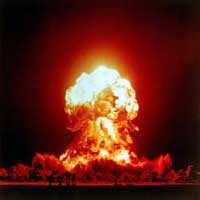Support and Resistance Zones Because techni
Post# of 18540

Support and Resistance Zones
Because technical analysis is not an exact science, it is useful to create support and resistance zones. This is contrary to the strategy mapped out for Lucent Technologies (LU), but it is sometimes the case. Each security has its own characteristics, and analysis should reflect the intricacies of the security. Sometimes, exact support and resistance levels are best, and, sometimes, zones work better. Generally, the tighter the range, the more exact the level. If the trading range spans less than 2 months and the price range is relatively tight, then more exact support and resistance levels are best suited. If a trading range spans many months and the price range is relatively large, then it is best to use support and resistance zones. These are only meant as general guidelines, and each trading range should be judged on its own merits.
Returning to the analysis of Halliburton (HAL), we can see that the November high of the trading range (33 to 44) extended more than 20% past the low, making the range quite large relative to the price. Because the September support break forms our first resistance level, we are ready to set up a resistance zone after the November high is formed, probably around early December. At this point though, we are still unsure if a large trading range will develop. The subsequent low in December, which was just higher than the October low, offers evidence that a trading range is forming, and we are ready to set the support zone. As long as the stock trades within the boundaries set by the support and resistance zone, we will consider the trading range to be valid. Support may be looked upon as an opportunity to buy, and resistance as an opportunity to sell.
 (0)
(0) (0)
(0)